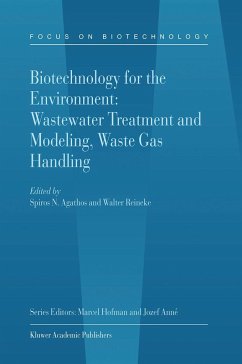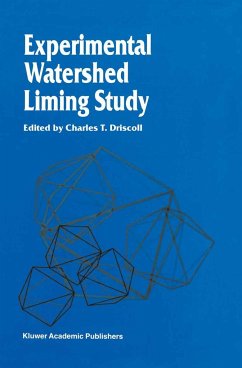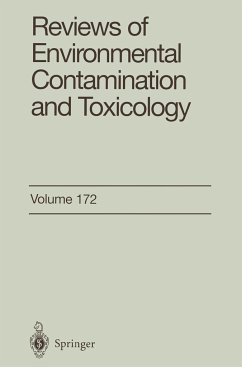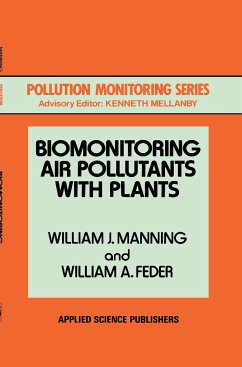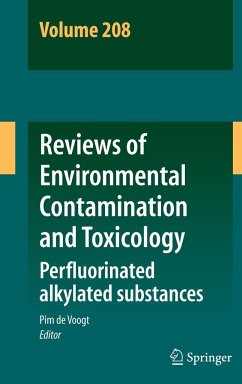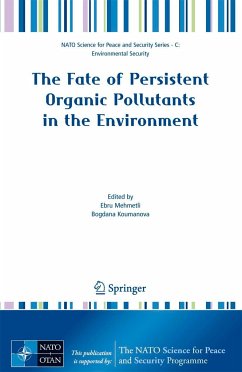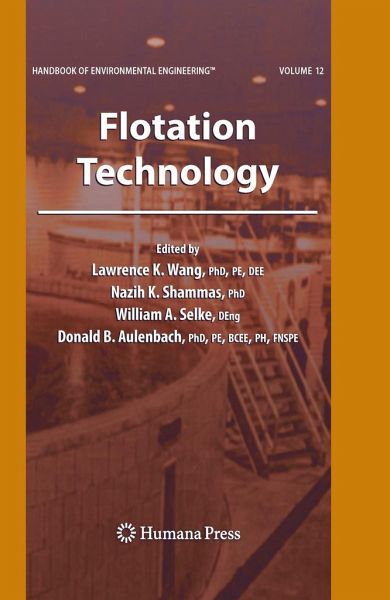
Flotation Technology
Volume 12
Herausgegeben: Wang, Lawrence K.; Shammas, Nazih K.; Selke, William A.; Aulenbach, Donald B.

PAYBACK Punkte
58 °P sammeln!
The Handbook of Environmental Engineering series is an incredible collection of methodologies that study the effects of pollution and waste in their three basic forms: gas, solid, and liquid. This exciting new addition to the series, Volume 12: Flotation Technology, has been designed to serve as both a basic flotation textbook and a comprehensive reference book. An indispensable guide for advanced undergraduate and graduate students, designers of water and wastewater treatment systems, scientists, and researchers, this volume is essential for all readers who are interested in the specialized investigation of the theory and practice of various wastewater systems. A critical volume in the Handbook of Environmental Engineering series, chapters employ methods of practical design and calculation illustrated by numerical examples, include pertinent cost data whenever possible, and explore in great detail the fundamental principles of the field. Volume 12: Flotation Technology, provides information on some of the most innovative and ground-breaking advances in the field today from a panel of esteemed experts.
- Coverage of the principles of air flotation technology and the fundamentals of water and wastewater flotation and lake restoration.
- Emphasis on industry standards, trends in the field, full-scale operation and laboratory simulation of air flotation processes.
- Examples of actual operating water and wastewater treatment plants based on air flotation
- Reference of practical use to scientists, researchers, educators and designers of water and wastewater treatment systems.
Contents:
Principles of Air Flotation Technology. Gas Dissolution, Release, and Bubble Formation. Separation of Oil From Wastewater. Fundamentals of Wastewater Flotation. Electroflotation. Electrocoagulation-flotation. Treatment of Paper Mill Whitewater. Recycling and Recovery of Raw Materials. Ozone-oxygen Oxidation Flotation, Wastewater Renovation by Flotation. Flotation-Filtration System for Wastewater Reuse. Algae Removal by Flotation. Completely Closed Water Systems in Paper Mills. Lake Restoration Using DAF. Jiminy Peak, Hancock, Massachusetts Wastewater Treatment Plant. Pittsfield, Massachusetts Water Treatment System. Pretreatment of Meat Processing Waste. Treatment of Seafood Processing Wastewater. Laboratory Simulation of Air Flotation Processes. Appendix. Index.
- Coverage of the principles of air flotation technology and the fundamentals of water and wastewater flotation and lake restoration.
- Emphasis on industry standards, trends in the field, full-scale operation and laboratory simulation of air flotation processes.
- Examples of actual operating water and wastewater treatment plants based on air flotation
- Reference of practical use to scientists, researchers, educators and designers of water and wastewater treatment systems.
Contents:
Principles of Air Flotation Technology. Gas Dissolution, Release, and Bubble Formation. Separation of Oil From Wastewater. Fundamentals of Wastewater Flotation. Electroflotation. Electrocoagulation-flotation. Treatment of Paper Mill Whitewater. Recycling and Recovery of Raw Materials. Ozone-oxygen Oxidation Flotation, Wastewater Renovation by Flotation. Flotation-Filtration System for Wastewater Reuse. Algae Removal by Flotation. Completely Closed Water Systems in Paper Mills. Lake Restoration Using DAF. Jiminy Peak, Hancock, Massachusetts Wastewater Treatment Plant. Pittsfield, Massachusetts Water Treatment System. Pretreatment of Meat Processing Waste. Treatment of Seafood Processing Wastewater. Laboratory Simulation of Air Flotation Processes. Appendix. Index.
The past 30 years have seen the emergence of a growing desire worldwide that positive actions be taken to restore and protect the environment from the degrading effects of all forms of pollution - air, water, soil, and noise. Since pollution is a direct or indirect consequence of waste, the seemingly idealistic demand for "zero discharge" can be construed as an unreal- tic demand for zero waste. However, as long as waste continues to exist, we can only attempt to abate the subsequent pollution by converting it to a less noxious form. Three major questions usually arise when a particular type of pollution has been identi?ed: (1) How serious is the pollution? (2) Is the technology to abate it available? and (3) Do the costs of abatement justify the degree of abatement achieved? This book is one of the volumes of the Handbook of Environmental Engineering series. The principal intention of this series is to help readers formulate answers to the last two questions above. The traditional approach of applying tried-and-true solutions to speci?c pollution p- blems has been a major contributing factor to the success of environmental engineering and has accounted in large measure for the establishment of a "methodology of pollution control. " However, the realization of the ever-increasing complexity and interrelated nature of current environmental problems renders it imperative that intelligent planning of pollution abatement systems be undertaken.






